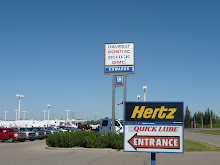Why does GM need to update the Duramax just three years after the current engines arrived? As of Jan 1. 2010 federal diesel emission standards state that GM must reduce the amount of nitrogen oxide (NOx) levels by 90 percent that the previous generation Duramax Diesel engine released.
NOx is a major air pollutant that contributes to smog, asthma, and respiratory and heart diseases. It's a byproduct of diesel’s high combustion temperatures.
The newest Duramax diesel engines are now built to meet the strict new clean-air regulations, while still featuring other key improvements in technology and capability. Like today’s Duramax, the Isuzu-GM joint venture engine will continue to be available in a truck and van configuration.
“The new Duramax diesels are based on the same engines that have been around since 2001,” said Gary Arvan, a GM diesel powertrain engineering chief. “The 2500 and 3500 Chevrolet Silverado and GMC Sierra HD pickups receive the high-power LML motor [replacing the 2007-10 LMM], while the 2500 and 3500 heavy-duty vans receive the lower-rated LGH engine [also replacing the LMM]. Both have iron blocks, aluminum cylinder heads, and their [6.6-liter] bore and stroke are unchanged.”
The Allison six-speed transmission will power the mighty LML engine while the LGH will be paired to GM’s 6L90 six-speed transmission, the same transmission used for the 2500 Vortec 6.0L.
The two biggest technical changes to the Duramax are the all-new selective catalytic reduction and enhanced exhaust gas recirculation systems. Which will now allow the engine to produce no more than .2 grams per horsepower/hour and to run on B20 Bi0-Diesel.
The new selective catalytic reduction system requires "diesel exhaust fluid" which is a urea-based solution that will be held in a 5.5-gallon storage tank and injected as a mist into the exhaust gases the Duramax produces. The heat from the exhaust gas will turn the solution into ammonia that in combination with the new catalytic converter, will break the NOx down into harmless nitrogen gas and water vapor.
Where will the fill for this fluid be and how often do I have to add fluid??

The exhaust fluid refill point for the HD pickups is mounted under the hood of the engine, while the vans’ is positioned next to the fuel door on the side of the vehicle. The tank is mounted on the side of the driver-side frame rail.
Diesel exhaust fluid refill intervals will vary depending on the conditions the truck is being used in. Some customers will only have to refill during routine maintenance, such as when the oil is changed, while others will have to top off the tank sooner if their truck is being "worked" more.
When the vehicle is down to the last 1500km range of fluid, warning lights/sounds/messages will begin to notify the driver that a refill is required. If the diesel fluid tank runs out, the truck will go into a "limp-mode" until solution is more added.
"The selective catalytic reduction and diesel-particulate filter systems depend on a diesel oxidation catalyst that’s positioned downstream, behind the engine, to start the NOx and soot-scrubbing processes. The catalyst requires high temperatures to perform. Those temperatures are achieved on-demand by the addition of a new fuel injector that’s been positioned directly behind the exhaust outlet of the Duramax’s variable-geometry turbo instead of using the engine’s eight existing in-cylinder injectors. Fuel is squirted into the hot exhaust and burns, quickly raising temperatures in the catalysts."
"The LML and LGH also make greater use of exhaust gas recirculation across the Duramax’s power band than did the LMM Duramax. The system recirculates a portion of the engine's exhaust back into the engine at a lower temperature. The cooled gases have a higher heat capacity and contain less oxygen than air, lowering combustion temperatures and reducing the formation of NOx. Exhuast gas recirculation is prevalent in today’s clean-diesel engines to reduce NOx, but it’s not efficient enough in its current form to meet 2010 emissions levels in GM’s trucks, hence the use of selective catalytic reduction also."
Power figures have not yet been released for the trucks, but GM has guaranteed that they will at least meet the 360-horsepower and 660 lbs./ft. of torque produced by the previous generation of truck Duramax engines. The van power figures have been released and have increased to 250 horsepower and 500 pounds-feet of torque from today’s 250 hp and 460 pounds feet, so expect to see more power in the truck engine as well.
Hopefully that has answered some of your questions in regards to the changes to GM's diesel line-up for 2010. Thanks for reading!!!
Information gathered from http://www.pickuptrucks.com/
